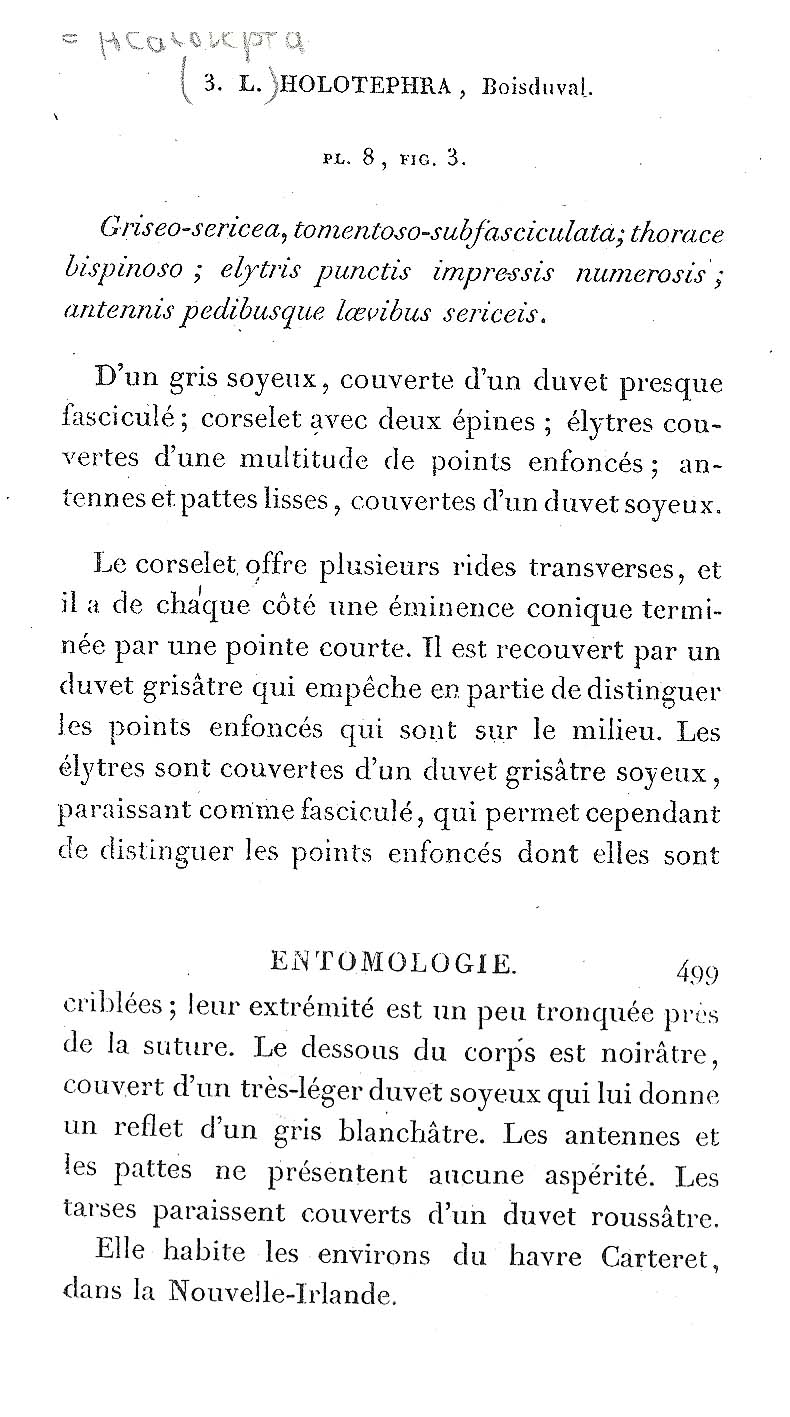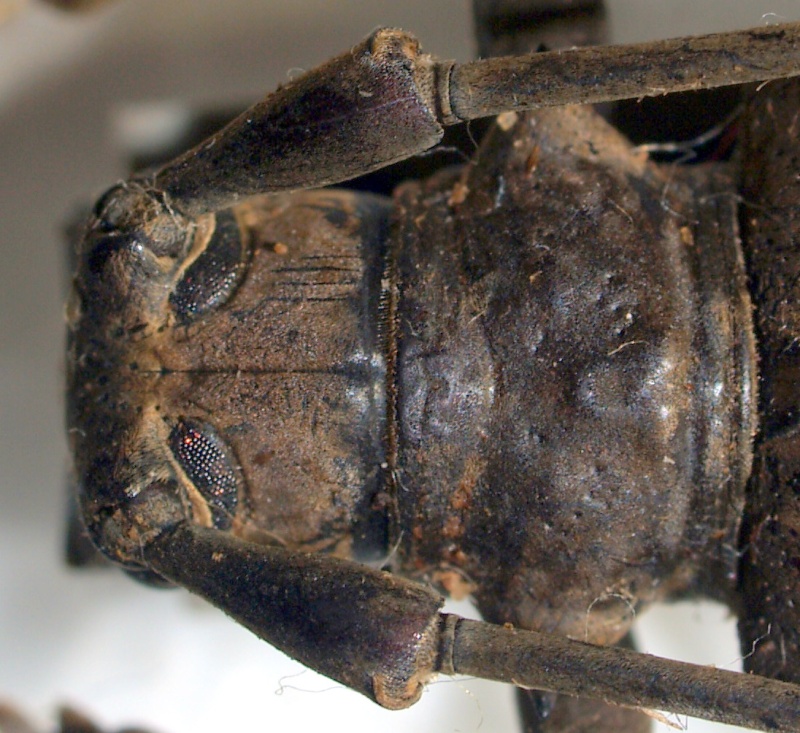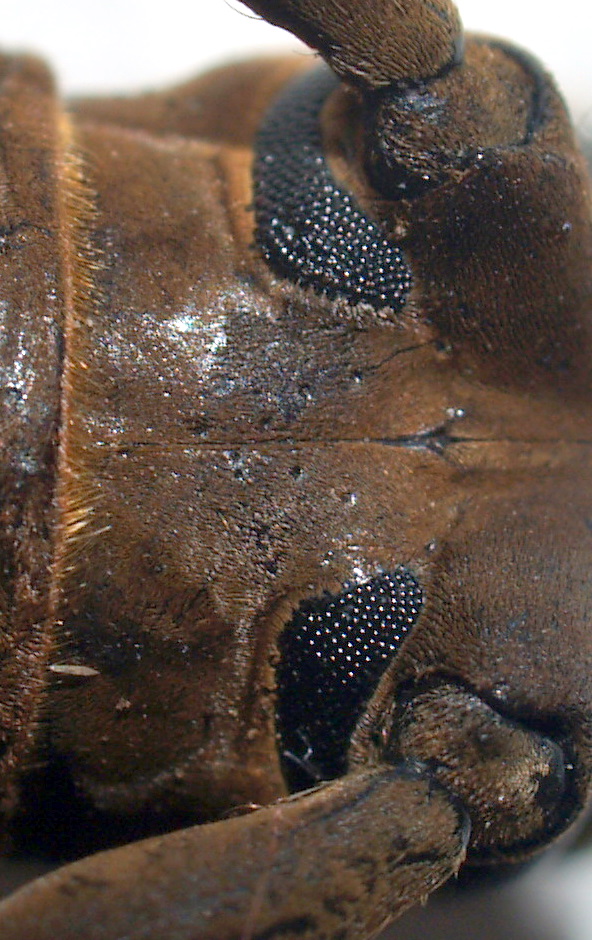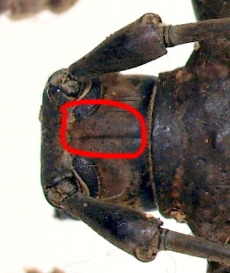| T O P I C R E V I E W |
| Gerard |
Posted - 12/02/2011 : 10:03:10

476.68 KB
INDONESIE, Mount Arfak,
taille 35 mm
et une troisième a antennes plus courtes |
| 11 L A T E S T R E P L I E S (Newest First) |
| Francesco |
Posted - 09/01/2016 : 07:37:52
Cette espèce ne correspond ni à la description originelle de holotephrus, ni au (faux) type de Paris, mais seulement à la description que Breuning lui avait donné.
Je pense que ton exemplaire pourrait être Acalolepta truncata Breuning... mais là j'ai aussi des doutes, car A. pseudoproducta, proche de celle-ci, a le type qui ne correspond pas à la description originelle  |
| Gerard |
Posted - 26/01/2014 : 08:14:16
Hello Andreas
for see clearer, one solution is to collect the types and take a maximum of photos of each.
The hardest it is to find them, as most have been described under other genera and dispersed in many Museums.
I had the same problem with for the genus Cyriopalus: description is too vague to know what beast has served. This is the problem with old descriptions. |
| Xaurus |
Posted - 26/01/2014 : 00:04:51
Thanks a lot Francesco for the translation even in German.
But the description in insufficient for any recognition like for most of Acalolepta sps. |
| Francesco |
Posted - 23/01/2014 : 19:05:37
Seidig grau, von einer fast gebänderten Behaarung bedeckt; Halsschild mit zwei Stacheln, Flügeldecken mit einer Menge von Tiefpunkten; Fühler und Beine glatt, von einer seidigen Behaarung bedeckt.
Der Halsschild weist mehrere Querfalten und beiderseits einen konischen Buckel, der mit einem kurzen Spitz endet. Das ist von einer dichten Behaarung bedeckt, die die mittleren Punkte zu beobachten hindert. Die Flügeldecken sind von einer seidigen grauen Behaarung bedeckt, wie gebändert scheinend, die aber die Tiefpunkte zu beobachten erlaubt, ihr Spitz am Suturalwinkel ein bisschen abgestutzt. Unterseite schwärzlich, von einer lichten seidigen Behaarung bedeckt, die eine weißlich-graue Spiegelung weist. Beine und Fühler weisen keine Rauheit. Die Füße scheinen von einer rötlichen Behaarung bedeckt.
Er bewohnt die Umgeb. von Havre Carteret in New Ireland.
Ok, das hat wenig mit dieser Art zu tun... das scheint sogar A. australis! |
| Xaurus |
Posted - 23/01/2014 : 17:25:18
Please Francesco, can you give me a translation of the French description for A. holotephra?

170.47 KB
Unfortunately I haven't the pl. 8 fig. 3., do you have a reliable picture of this sps?
Boisduval's sps is the oldest one, and maybe this widespread sps was described several times.
Thanks ! |
| Gerard |
Posted - 12/02/2011 : 15:33:04
Je t'ouvre un nouveau poste pour cette bête |
| Francesco |
Posted - 12/02/2011 : 15:11:39
C'est pas grave... mais j'ai relu ton étiquette et cette bête est longue 35 mm!
C'est trop pour tincturata (qui atteint 26 mm), il devrait s'agir d'holotephra, bien si 35 mm sont un peu trop (32 mm) pour elle aussi...
Est-ce que tu peux mettre une photo de l'autre bête? |
| Gerard |
Posted - 12/02/2011 : 13:47:23

Je t'ai mis une autre photo, par erreur, d’une autre bête.
Voici la photo de l’espèce du départ qui est peut l’autre Acalolepta. Le pronotum est différent a mon avis et la ponctuation moins visible, je m’excuse pour cette espèce que je pensais semblable
|
| Francesco |
Posted - 12/02/2011 : 13:10:12
Pourtant elle existe.
Il y a seulement deux espèces avec ces caractères: Acalolepta holotephra (Boisduval, 1835) et Acalolepta tincturata (Pascoe, 1866), qui se distinguent pour la pubescence: uniforme dans la première et maculée de brun et avec des taches chamois dans la deuxième.
La pubescence de tincturata est parfois onctueuse et donc les taches plus claires sont invisibles, mais les taches plus sobres sont toujours visibles.
Je pense qu'il s'agit de cette dernière espèce.
J'ai les deux, mais tincturata est plus commune (et je ne sais pas si holotephra arrive en Irian Jaya). Plus tard je te vais donner la photos de quelques mâles pour voir sa variabilité. |
| Gerard |
Posted - 12/02/2011 : 12:21:41

La ponctuation est très peu marquée |
| Francesco |
Posted - 12/02/2011 : 11:29:09

Ceci c'est une femelle d'un groupe un peu plus difficile... y-a-t-il de points enfoncés sur le vertex (zone rouge)? |


